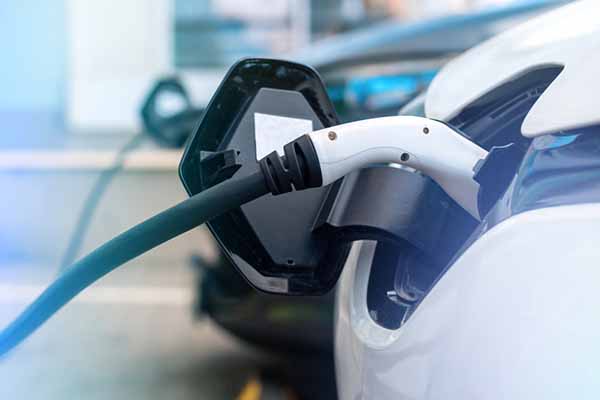Though many possibly enters a showroom today to buy a conventional car but it seems to shift in the coming time or may it already has. Putting the pricing point aside, Electric Vehicles(EVs) has taken the Indian automobile sector by storm. Every auto company today in India is just waving the flag toward this green future. Everyday new launches, major events grandeur floors showcasing the future of electric powered cars and buying potential and interest among consumers are ‘eco-friendly’. The market is swift, agile, sustainable and promising at the same time. The electric and connected mobility could help the India save nearly one giga-tonne of carbon dioxide emissions by 2030.
What’s The EV Potential?
India’s electric vehicle (EV) market is expected to grow at a compounded annual growth rate (CAGR) of 90 per cent in this decade to touch $150 billion by 2030, a report by consulting firm RBSA Advisors, states. The Indian EV market is currently in its infancy and is estimated grow at CAGR of 90 per cent from 2021 to 2030. In terms of penetration, EV sales accounts for barely 1.3 per cent of total vehicle sales in India during 20-21. However, the report mentions without massive R&D infrastructure and investment in EV technology the market could spry either way. Product development is another major area where the electric car market should start looking into seriously. Just the investment, R&D on the auto end shall not work as these new evolutionary EVs needs the battery and charging technology. Hence for that, an ecosystem, availability and less dependability on outsourcing will be crucial.
Collective investment done by 2W, 3W, 4W, EV component makers and last mile delivery companies was recorded at Rs ~25,000 crore during January– July 2021. The demand incentives provided under FAME II, the launch of state policies, rising fuel prices, tightening emissions laws and increasing awareness of the green environment are few factors making the sector attractive to larger automobile players and financial investors, as per the report.
Demanding EVs or Batteries Too?
Major announcements by the Government have strongly pushed the EV sector in India to new sentiments. In result, the EV industry in India has been a center-stage for many foreign investors. Today, Ola electric is worth more than $5 billion. Other companies like, TRP Rise Climate, Hindustan Motors, General Motors, Okaya, Hero, TVS, Honda are dominating investments in this bullish EV sector. Not to forget mobility players have also seen a good investor mood where electric scooter rental start-up Bounce has made investments of about $100 million (around Rs 742 crore) over the next 12 months across manufacturing of e-scooters and expanding the battery swapping infrastructure.
Chip Shortage Not a Problem as Projects Driving the Sentiment
Globally, despite the COVID-19 pandemic related worldwide downturn in car sales, wherein global car sales dropped by 16 per cent in 2020, strong demand and momentum was seen in the global EV market where around 3 million electric cars were sold. CYH1-21 sales were dominated by Mainland China and Europe. China saw 1.1 million vehicles being sold with Europe being behind by just 10,000.
By making the shift towards electric vehicles (EVs), India stands to benefit on many fronts: it has a relative abundance of renewable energy resources and availability of skilled manpower in the technology and manufacturing sectors.
According to an independent study by CEEW Centre for Energy Finance (CEEW-CEF), the EV market in India will be a US$206 billion opportunity by 2030 if India maintains steady progress to meet its ambitious 2030 target. This would require a cumulative investment of over US$180 billion in vehicle production and charging infrastructure.
Another report by India Energy Storage Alliance (IESA) projects that the Indian EV market will grow at a CAGR of 36 percent till 2026. The EV battery market is also projected to grow at a CAGR of 30 percent during the same period.
Launch of ‘e-AMRIT’ portal: One-stop platform for information on electric vehicles
India rolled out the website e-AMRIT – https://www.e-amrit.niti.gov.in/ – at the COP26 Summit in Glasgow, which will function as a one-stop destination for all information on electric vehicles. It addresses key concerns about the adoption of EVs and their purchase – such as charging facility locations and EV financing options as well as information about investment opportunities, government policies, and available subsidies for drivers and manufacturers.
The federal government is also prioritizing the shift towards clean mobility, and recent moves to amend the Faster Adoption and Manufacturing of Hybrid and Electric Vehicles in India (FAME) II scheme to make electric two-wheelers more affordable, is a case in point. Under the phase two of the FAME scheme, about 1,65,000 electric vehicles have been supported, as on November 25, 2021, by way of demand incentive amounting to about INR 5.64 billion (US$75.16 million). Further, under the scheme, approvals have been granted for 6,315 electrical buses, 2,877 EV charging stations amounting to INR 5 billion (US$66.63 million) in 68 cities across 25 states/Union Territories and 1,576 charging stations amounting to INR 1.08 billion (US$14.39 million) across nine expressways and 16 highways.
In addition, multiple production-linked incentive schemes intend to create a local manufacturing ecosystem to support goals around greater adoption of electric mobility transport. This is sought to be achieved by incentivizing fresh investments into developing indigenous supply chains for key technologies, products, and auto components.
Production-linked Incentive Schemes
In May 2021, the government rolled out a Production-Linked Incentive Scheme (PLI) for ACC Battery Storage Manufacturing, which will incentivize the domestic production of such batteries and reduce the dependence on imports. This will support the EV industry with the requisite infrastructure and will significantly cause a reduction in cost of EVs.
Federal Policy
Several fiscal and non-fiscal measures wooing the adoption of electric mobility.
National Electric Mobility Mission Plan 2020 (NEMMP): It was launched in 2013 by the Department of Heavy Industry (DHI) as a roadmap for the faster manufacture and adoption of EVs in India.
- FAME Phase I: As part of the NEMMP 2020, the Faster Adoption and Manufacturing of Hybrid and Electric Vehicles in India (FAME India) Scheme was notified in April 2015, to promote the manufacture of electric and hybrid vehicle technology. It has mainly focused on four aspects – demand creation, technology platform, pilot projects, and charging infrastructure. For demand creation, incentives have mainly been disbursed in the form of reduced purchase prices.
- FAME Phase II: Launched in 2019 for a period of three years, this scheme has an outlay of US$1.36 billion to be used for upfront incentives on the purchase of EVs as well as supporting the development of charging infrastructure. FICCI has asked for continuation of FAME II till 2025, along with short-term booster incentives to enhance demand. This second phase focuses on supporting electrification of public and shared transportation and aims to support, through subsidies, about 7,000 e-buses, 5,00,000 e-three wheelers, 55,000 e-four wheeler passenger cars and one million e-two wheelers. In addition, creation of charging infrastructure is also supported.
- Amendments to FAME Phase II: On June 11, 2021, the Ministry of Heavy Industry announced further amendments to the FAME II scheme to give a boost to EV demand among consumers. Under the revised policy, the subsidy per electric two-wheeler (Indian-made), which is linked to the battery size, has been increased to INR 15,000 (US$204.60) per Kilowatt-hour (KWh) from INR 10,000 (US$136.40) KWh. Furthermore, electric two-wheeler manufacturers can now give discounts of up to 40 percent to consumers, which is a significant raise from the previous cap of 20 percent. The eligibility criteria for these electric two-wheelers to qualify for subsidy under the FAME II scheme include a minimum range of 80 km on single charge and a minimum top speed of 40 km per hour. These incentives are expected to significantly lower the purchase price and lift buyer sentiment, creating a spur in market demand. The amendments in the policy have been hailed by industry stakeholders who are now expecting the EV two-wheeler industry to clock sales of over six million units by 2025. Yet, according to a recent CRISIL report, 95 percent of the e-scooters in India are not eligible for the FAME II incentive scheme, as they fail to meet the eligibility criteria.
Ministry of Power: It has clarified that charging EVs is considered a service, which means that operating EV charging stations will not require a license. It has also issued a policy on charging infrastructure to enable faster adoption of EVs. The revised consolidated Guidelines & Standards for Charging Infrastructure for Electric Vehicles was promulgated on January 14, 2022. Exhaustive in scope, these guidelines include provisions for a) individual owners of EVs and b) for public charging stations (PCS) infrastructure. It covers land use and access, power tariffs, state and central government roles, timelines for providing connectivity for installation of PCS, among other concerns.
Ministry of Road Transport and Highways: It has announced that both commercial as well as private battery-operated vehicles will be issued green license plates. It has also notified that all battery operated, ethanol-powered, and methanol-powered transport vehicles will be exempted from the commercial permit requirement.
Department of Science and Technology: It has launched a grand challenge for developing the Indian Standards for Electric Vehicle Charging Infrastructure.Niti Aayog: The National Mission on Transformative Mobility and Battery Storage has been approved by the cabinet, and the inter-ministerial steering committee of the Mission will be chaired by the CEO of Niti Aayog. The Mission aims to create a Phased Manufacturing Program (PMP) for five years till 2024, to support setting up large-scale, export-competitive integrated batteries and cell-manufacturing giga plants in India, as well as localizing production across the entire electric vehicle value chain. On April 20, 2022, the think tank released a draft battery swapping policy and invited comments from relevant stakeholders by June 5, 2022. The draft policy, which will be valid till March 31, 2025 from the date of its notification, is specifically designed for battery swapping systems to be used for two-wheelers and three-wheelers.















